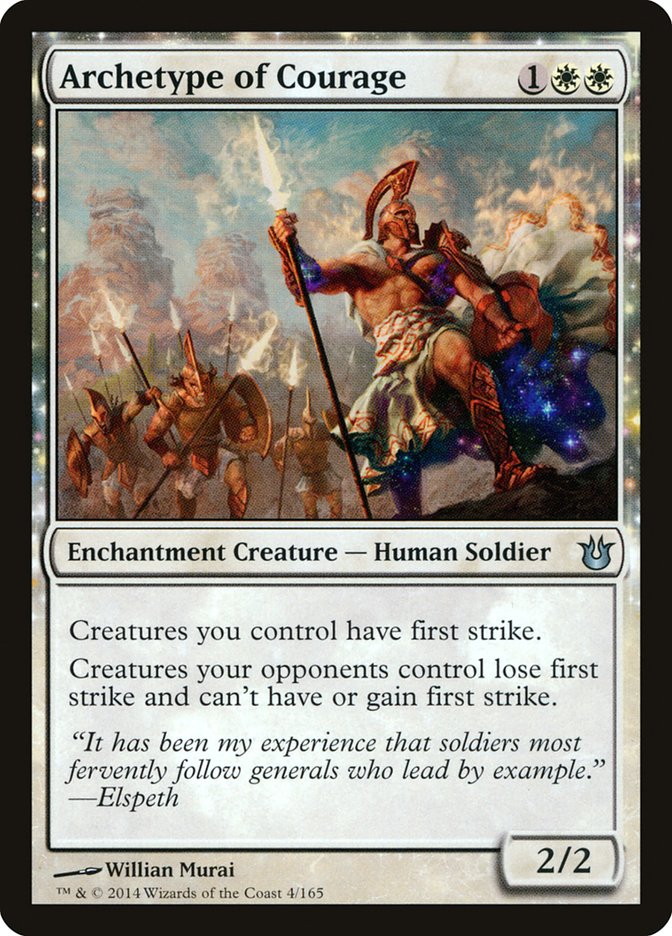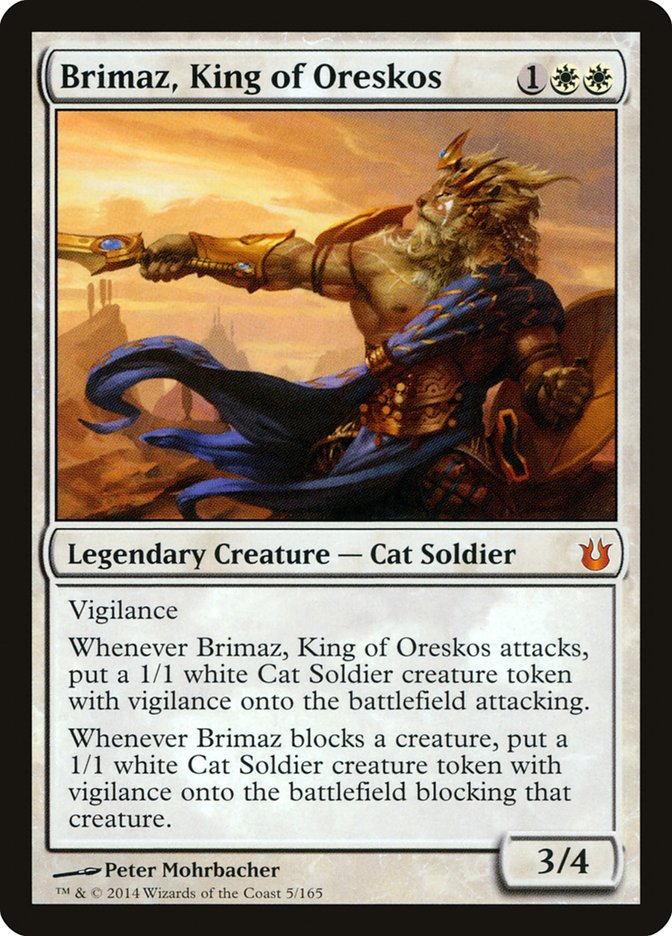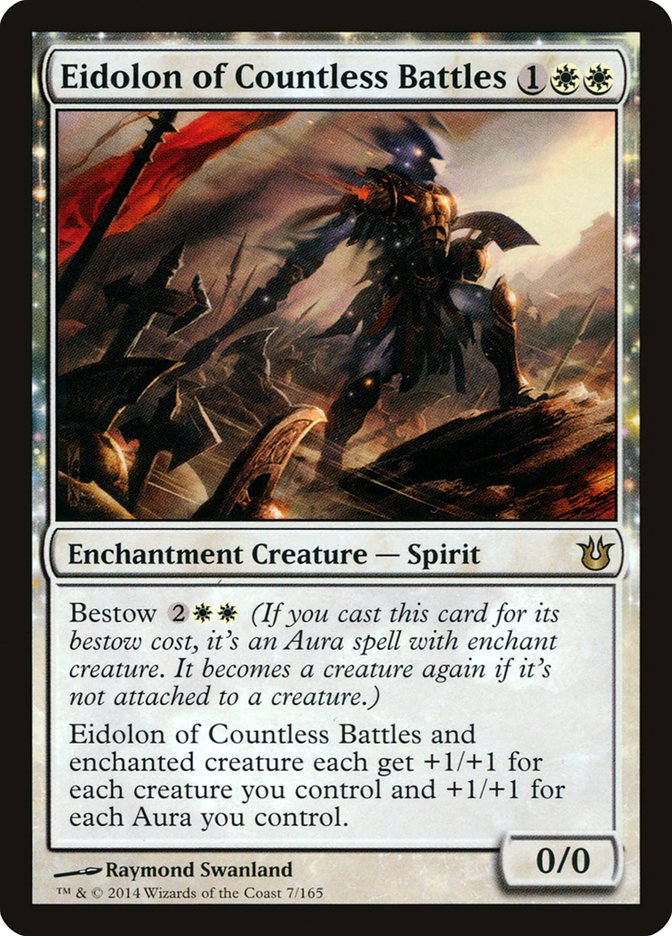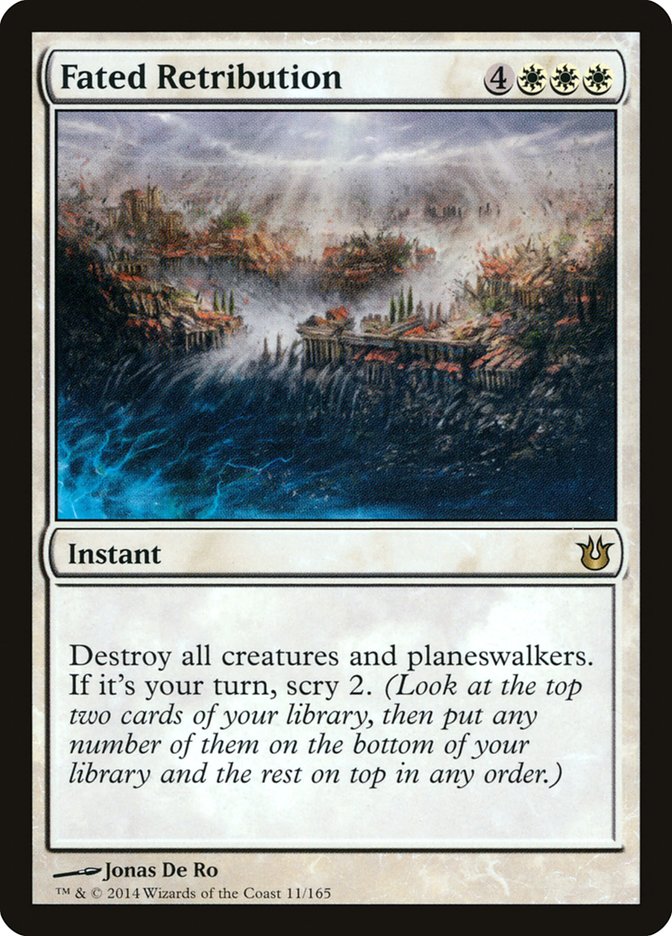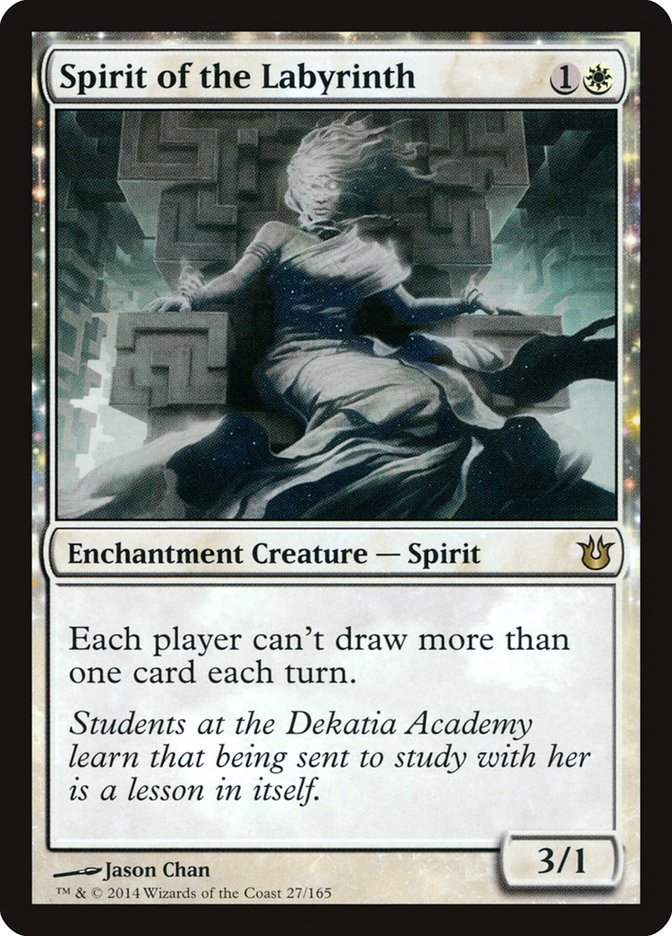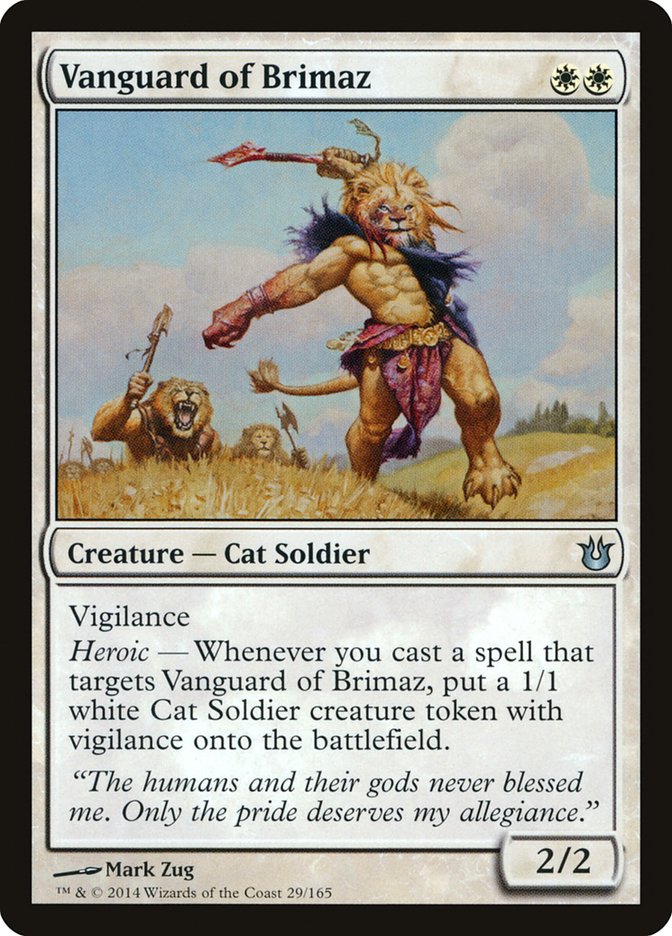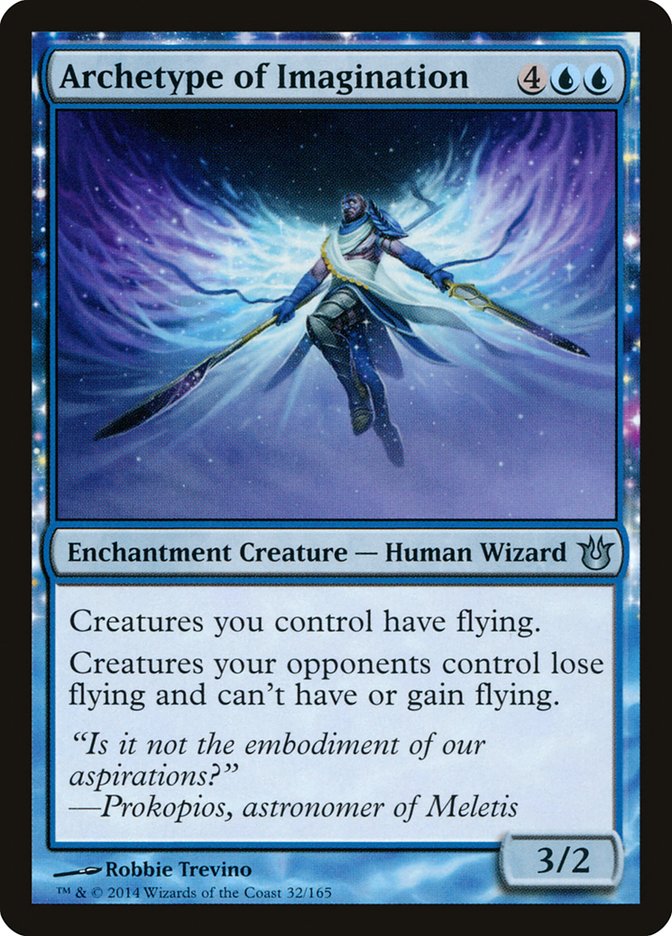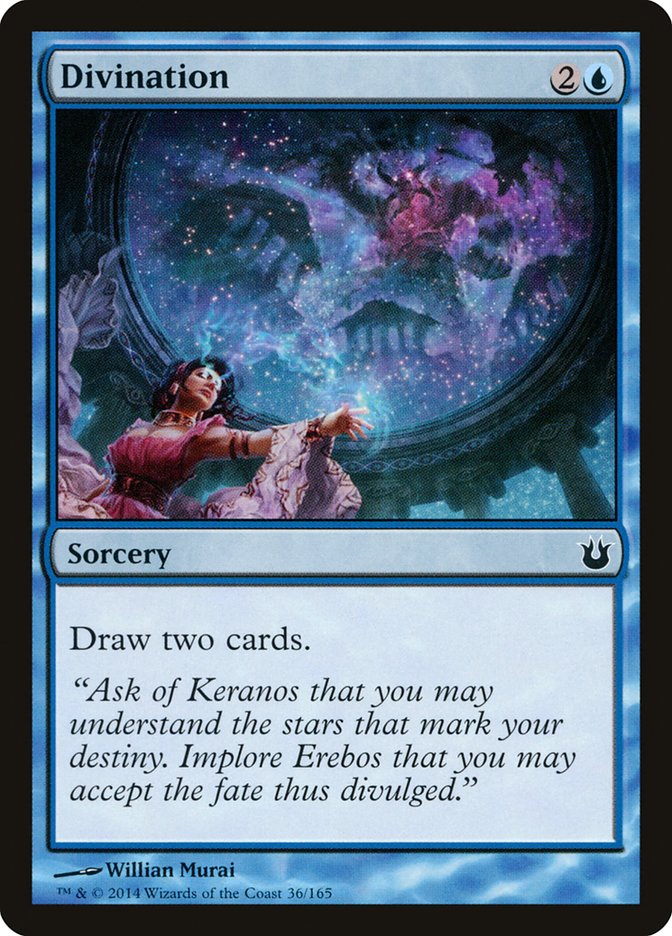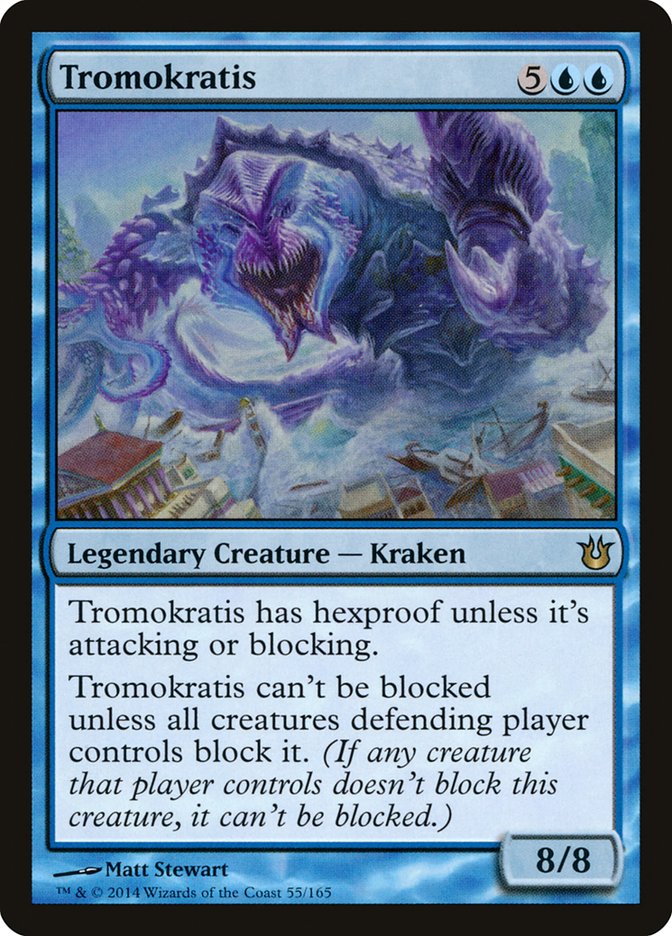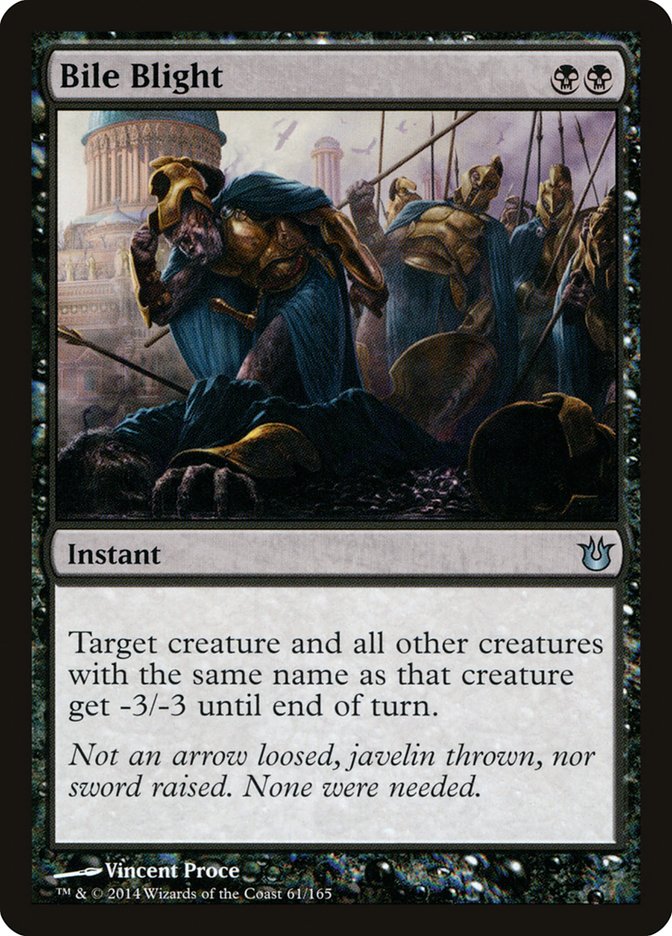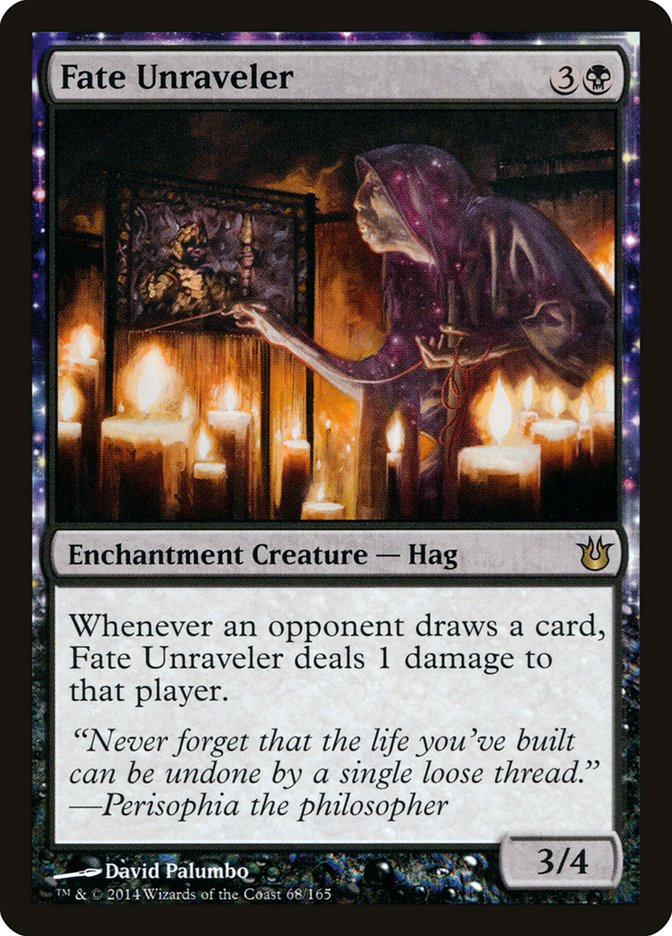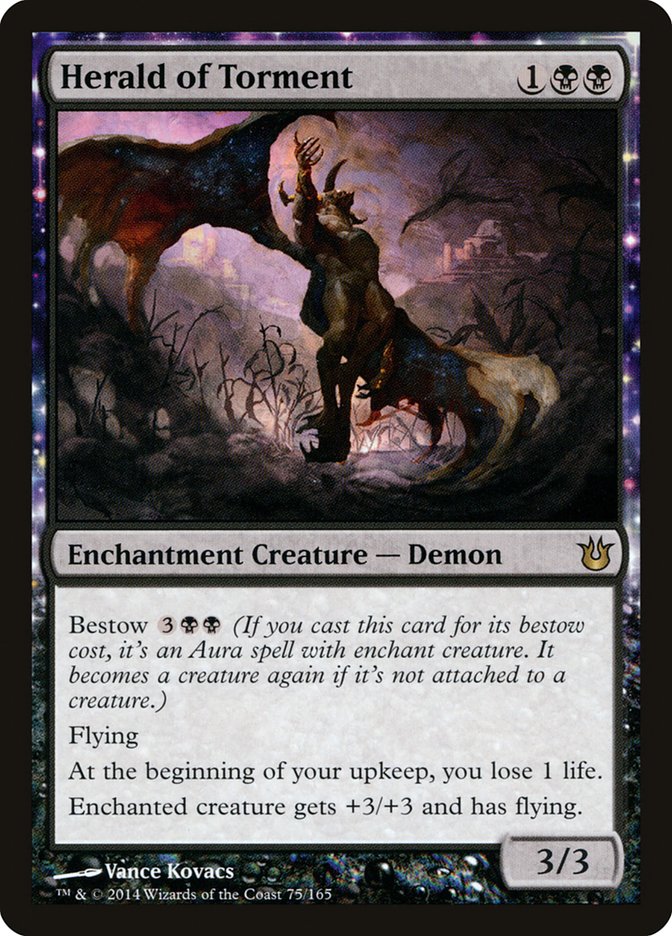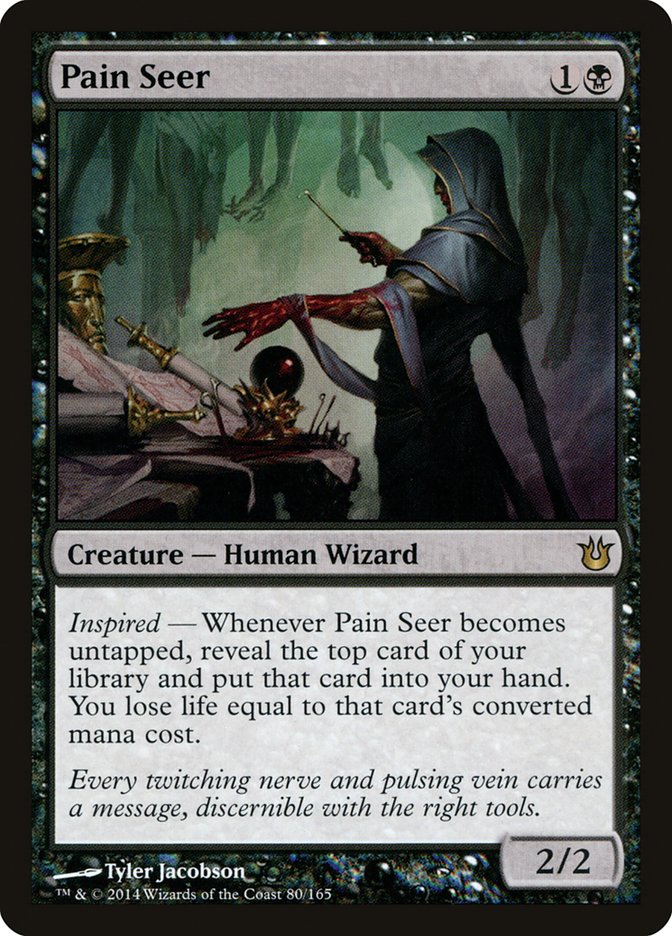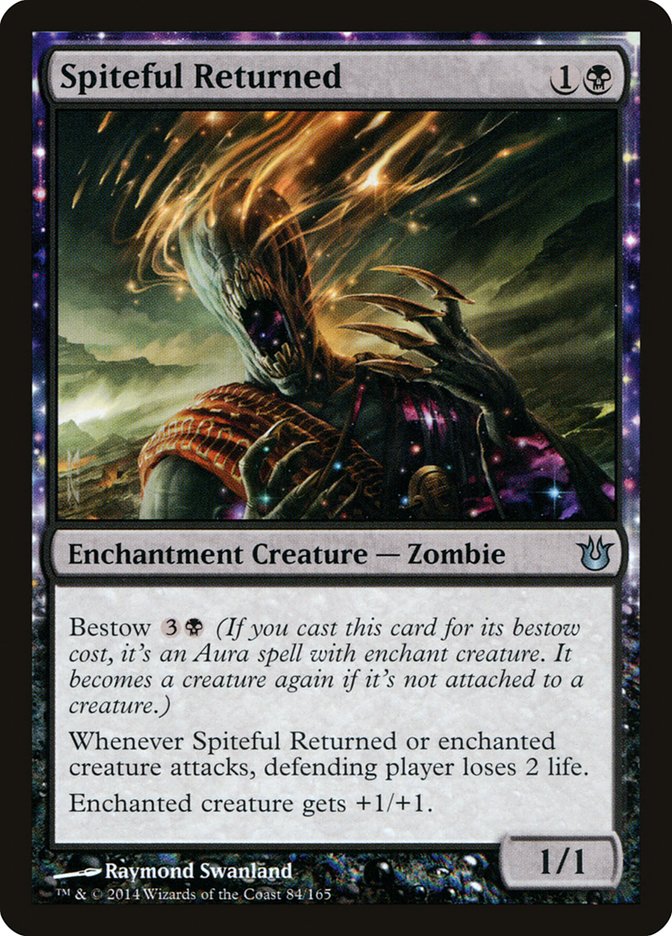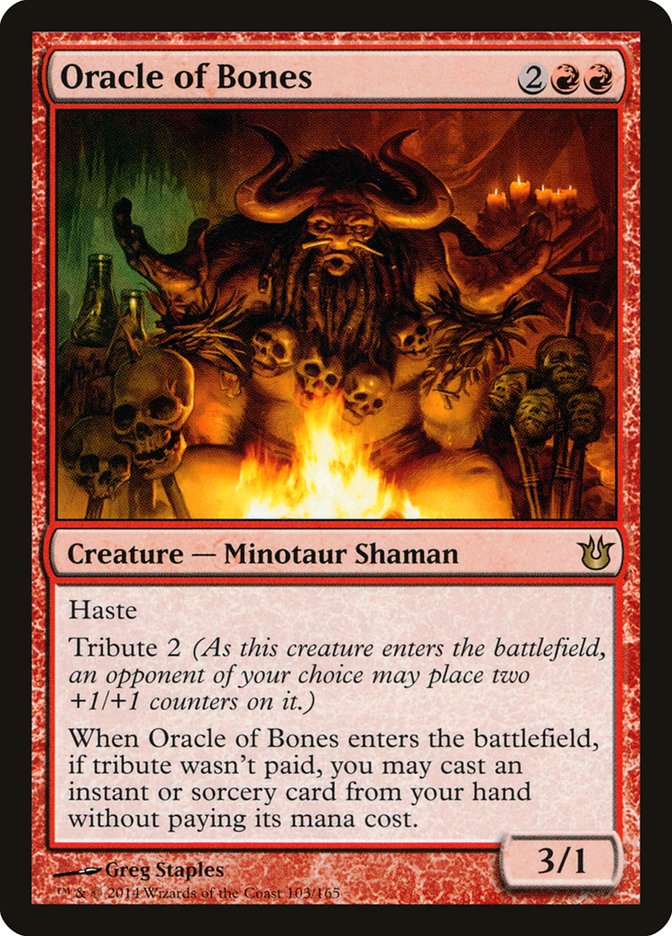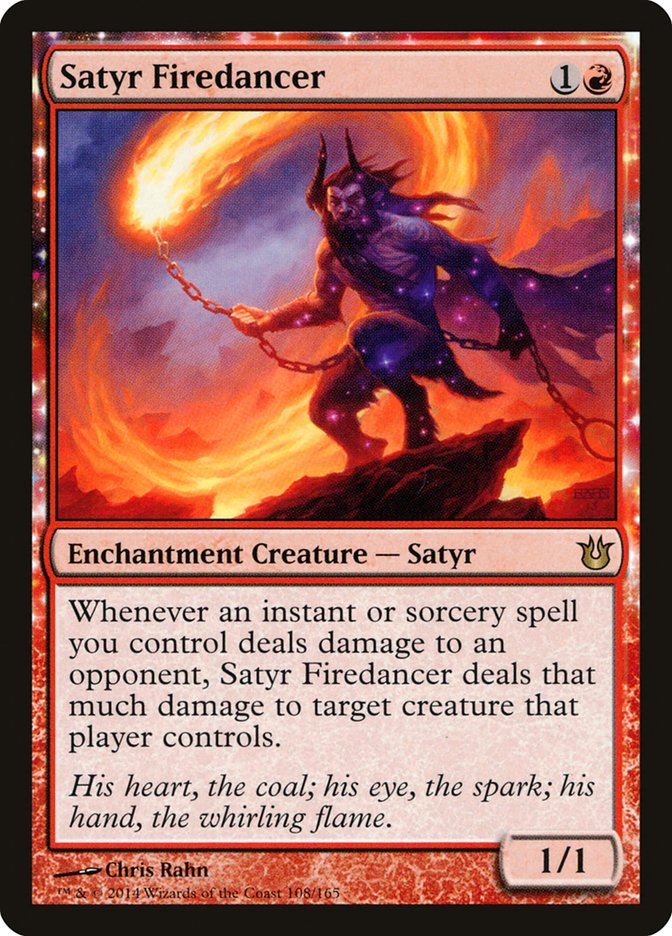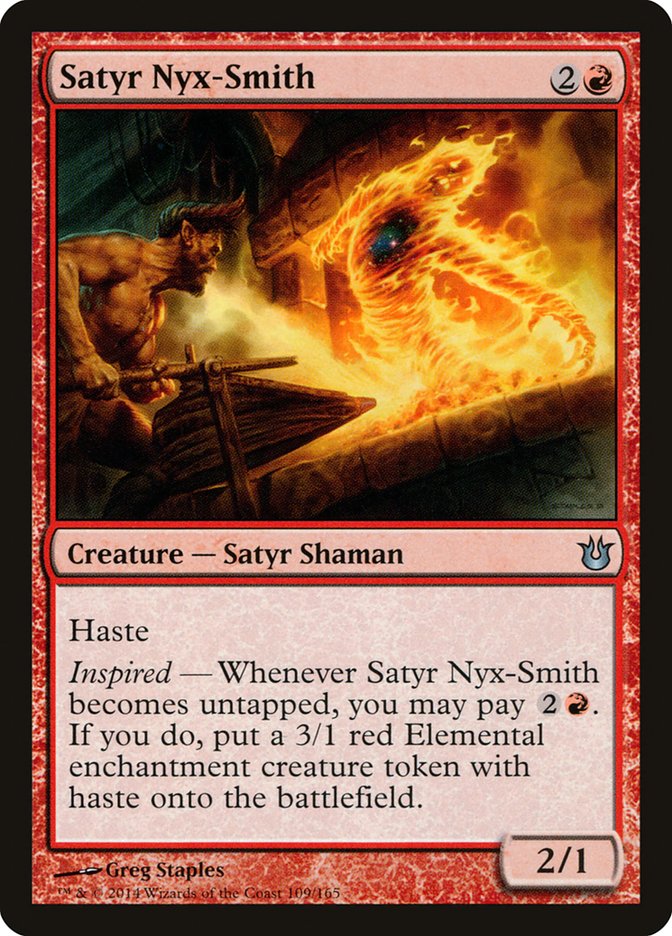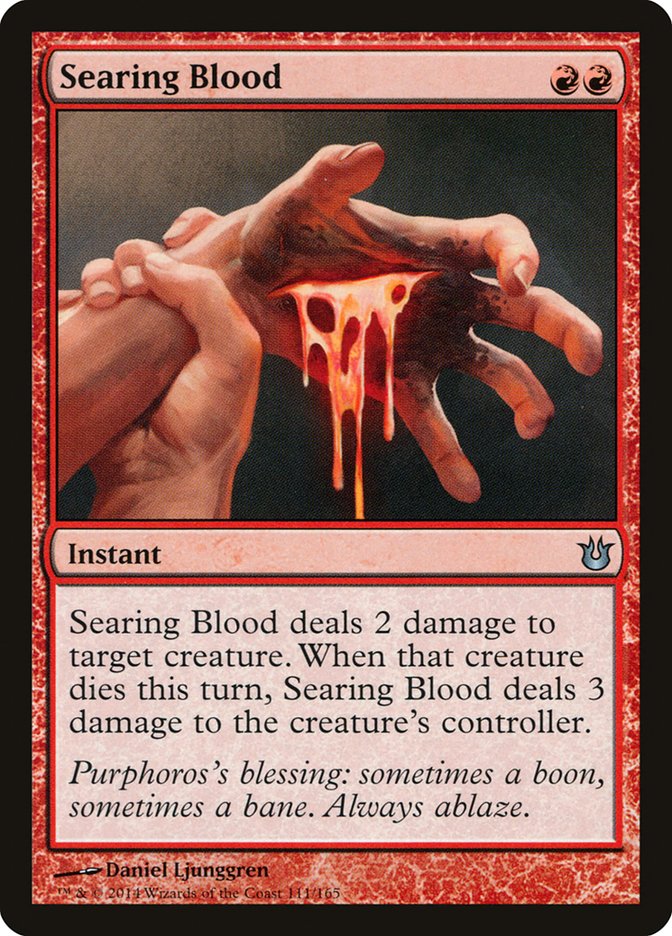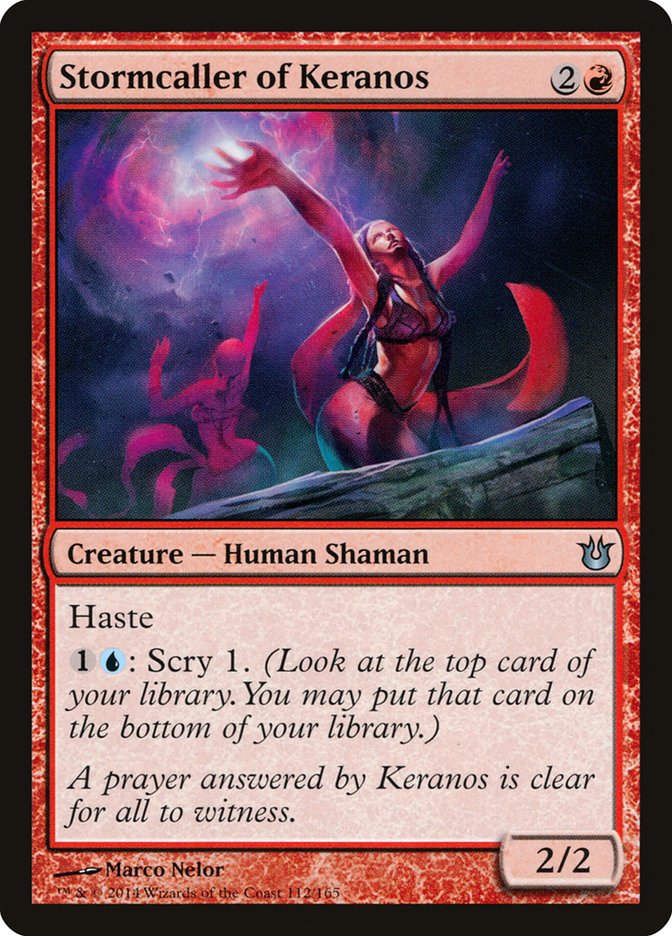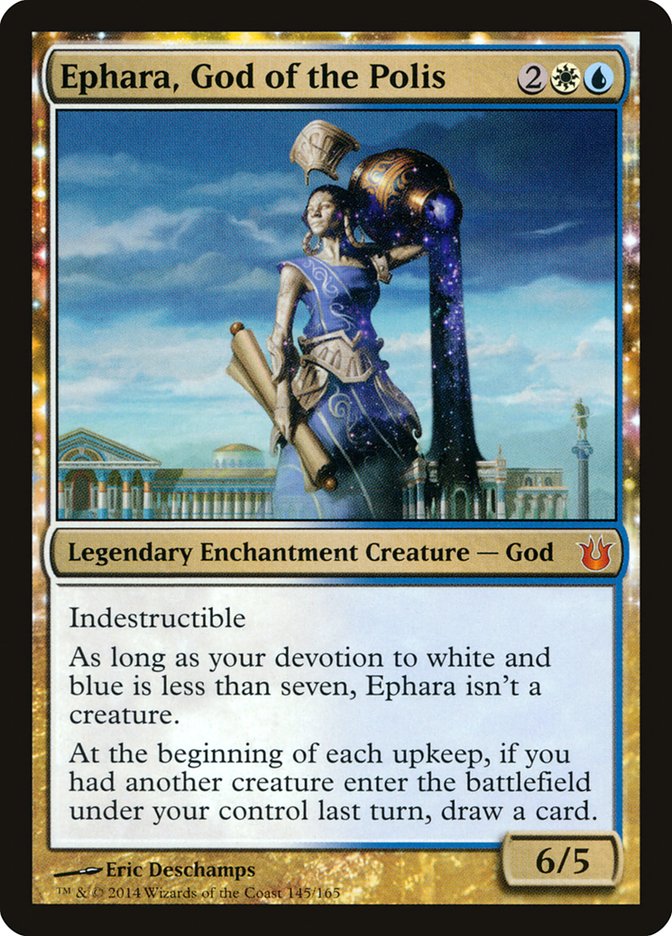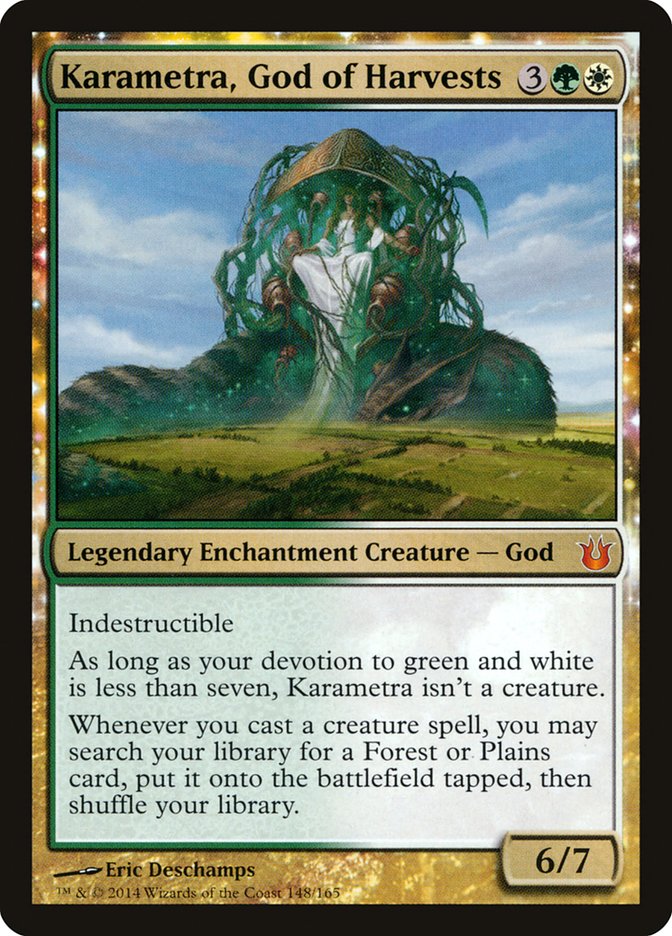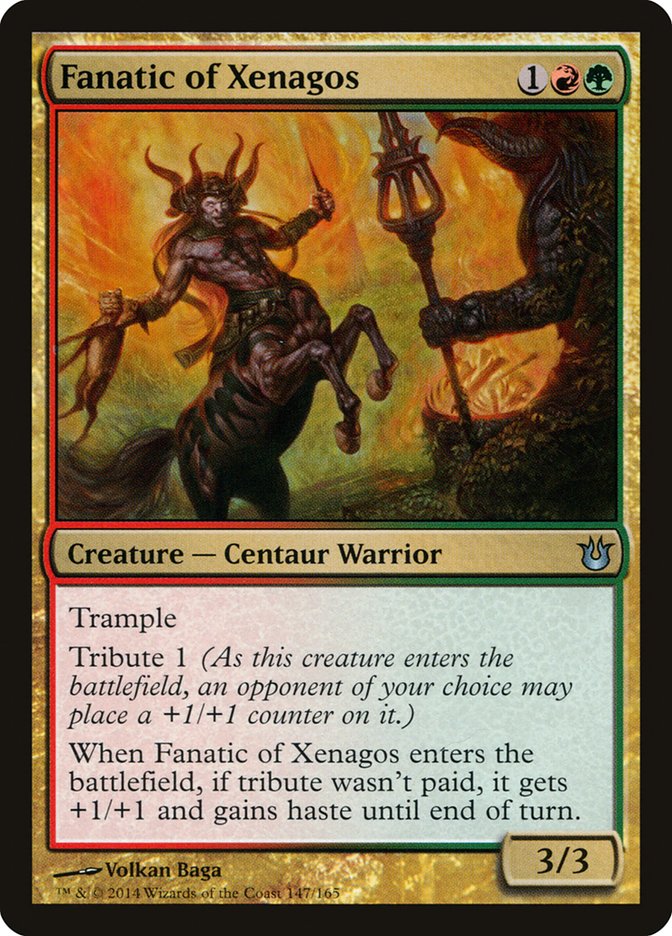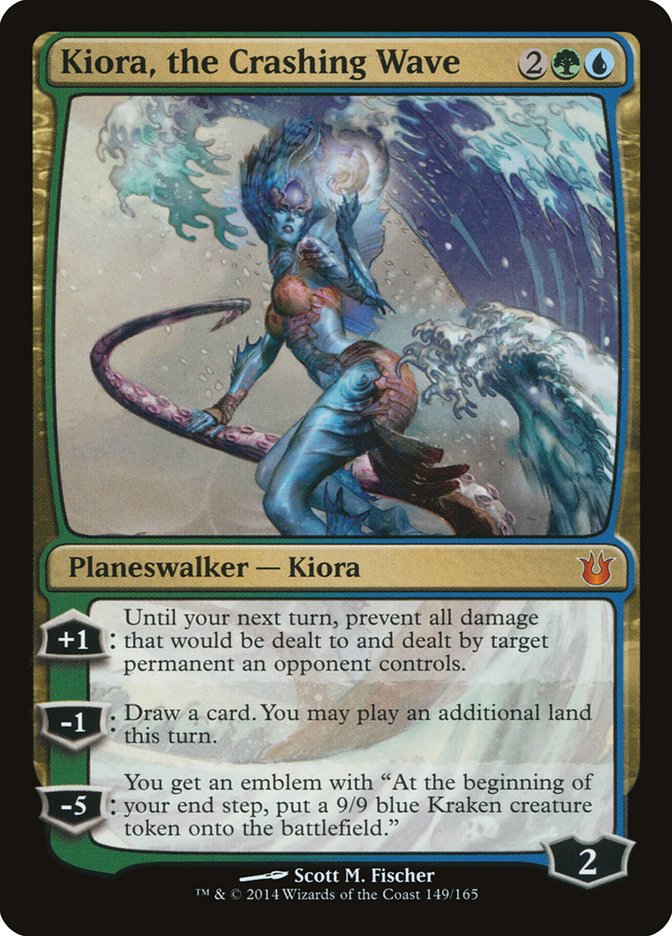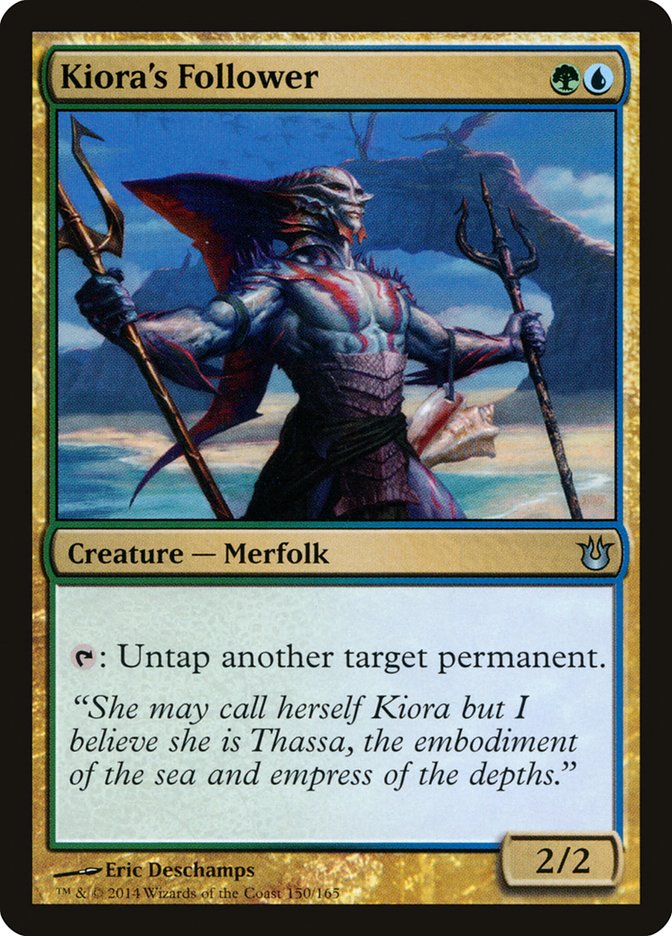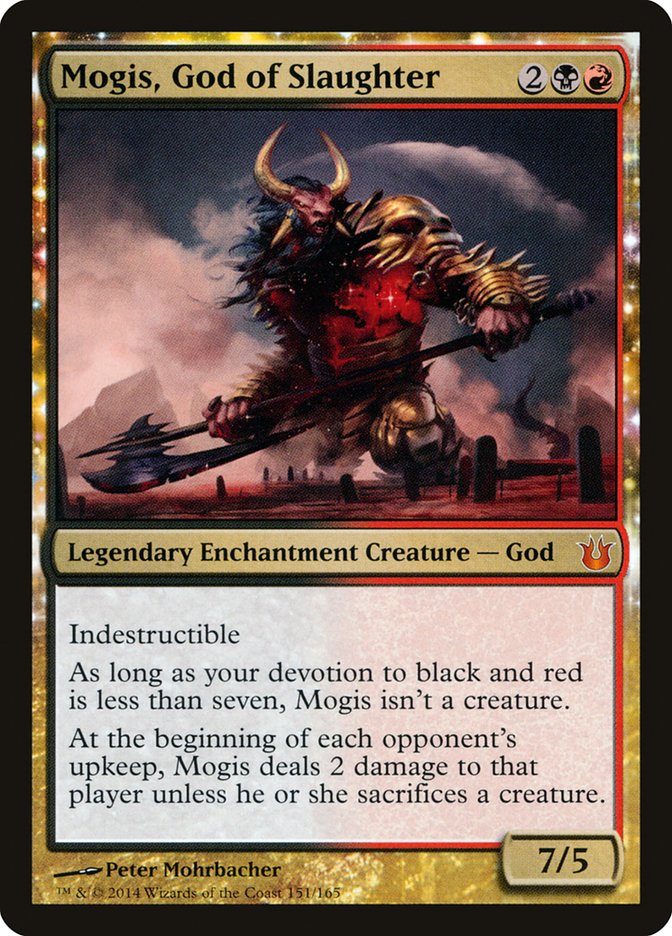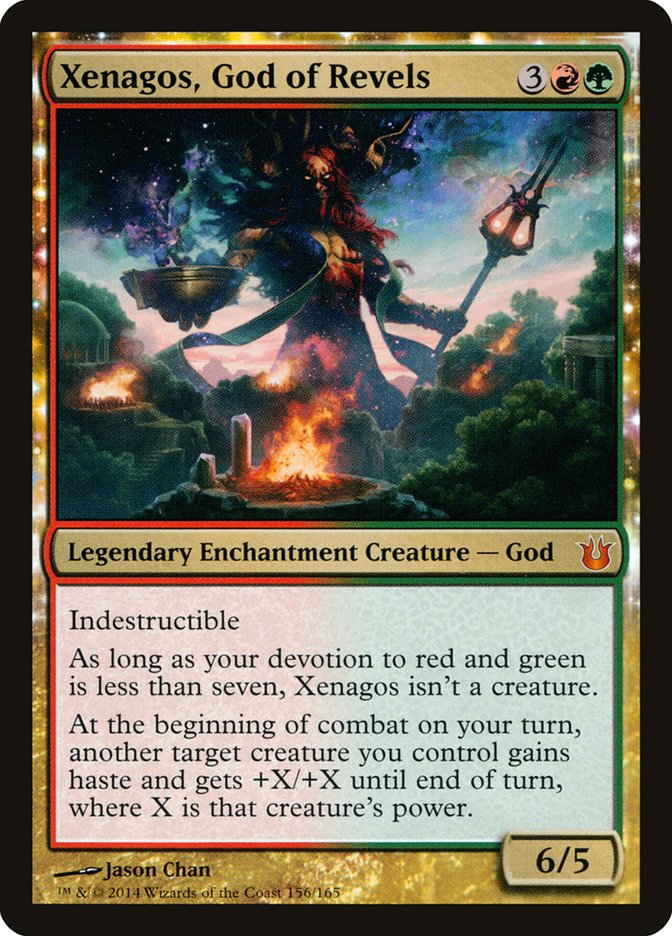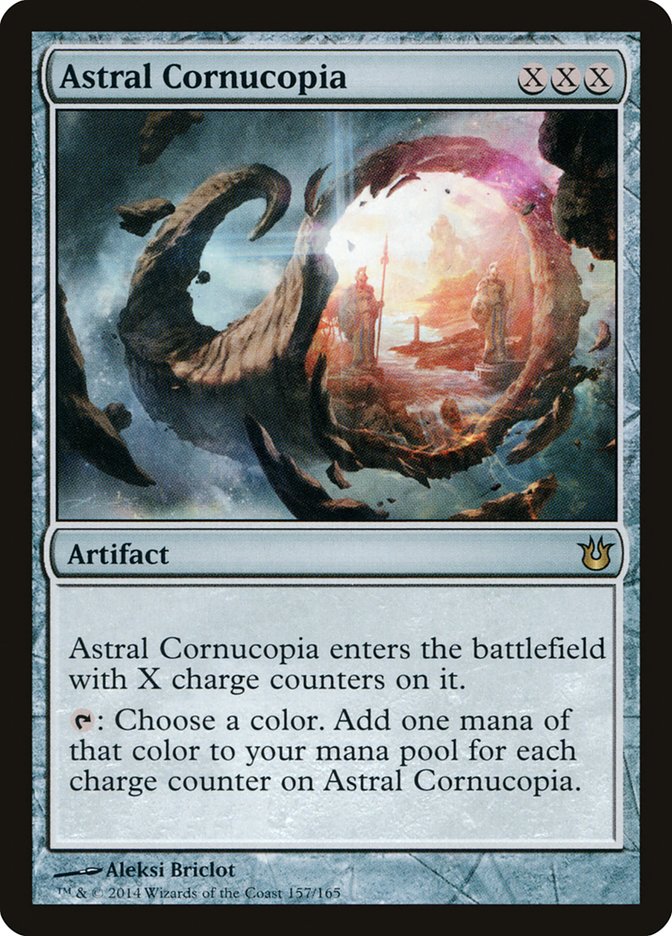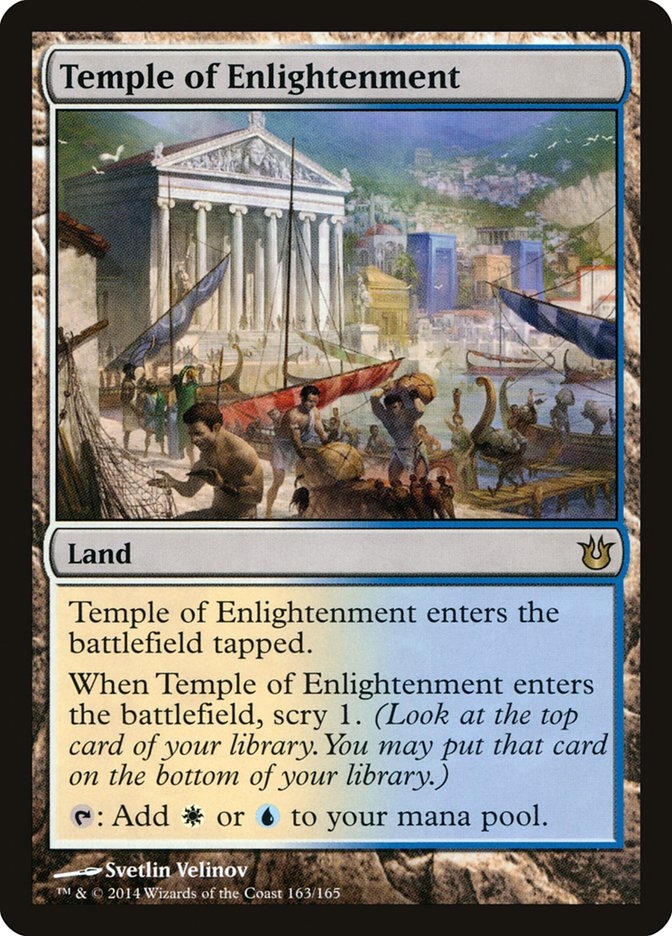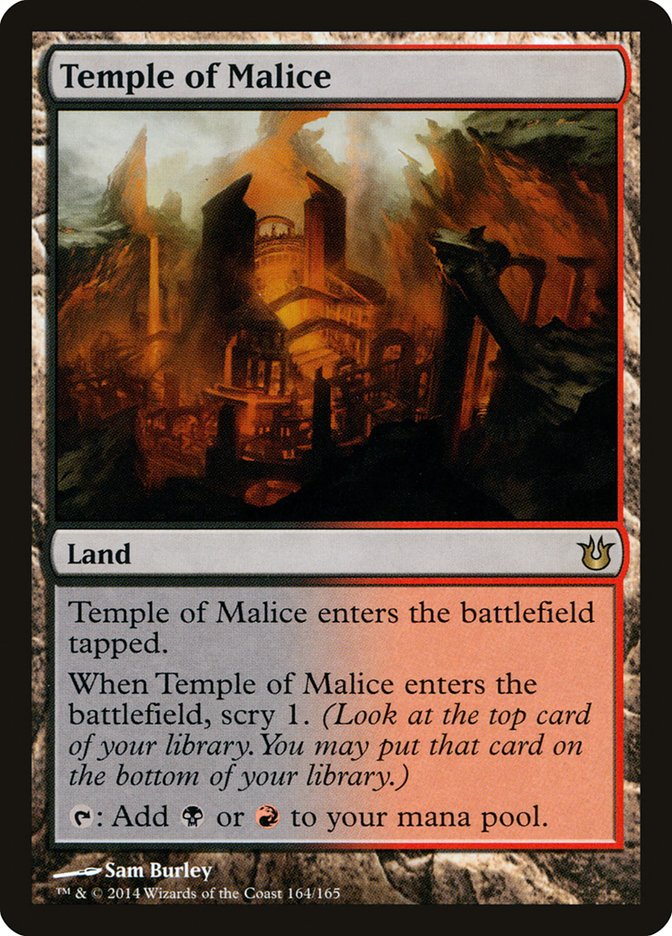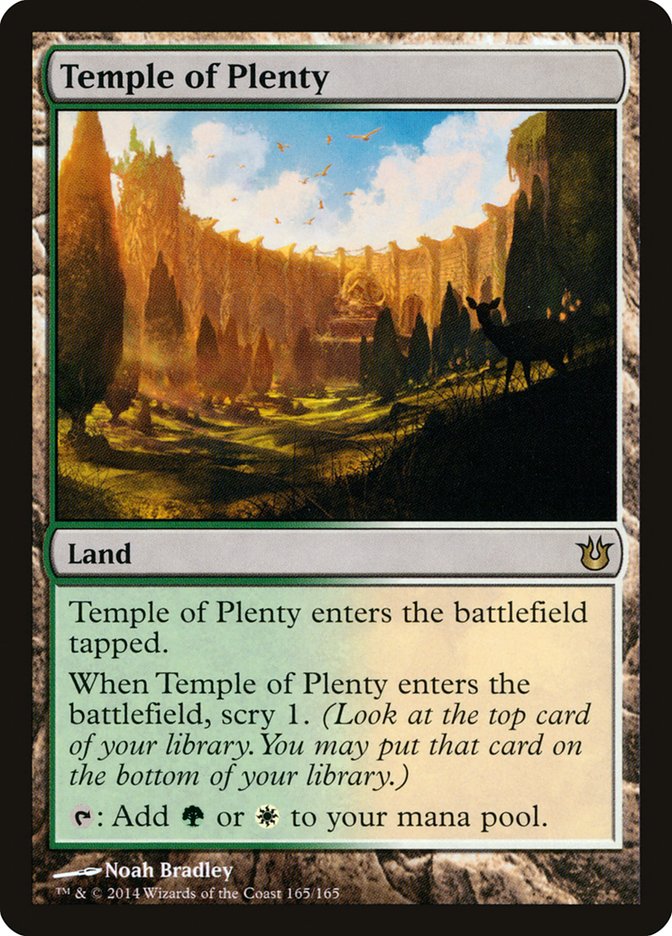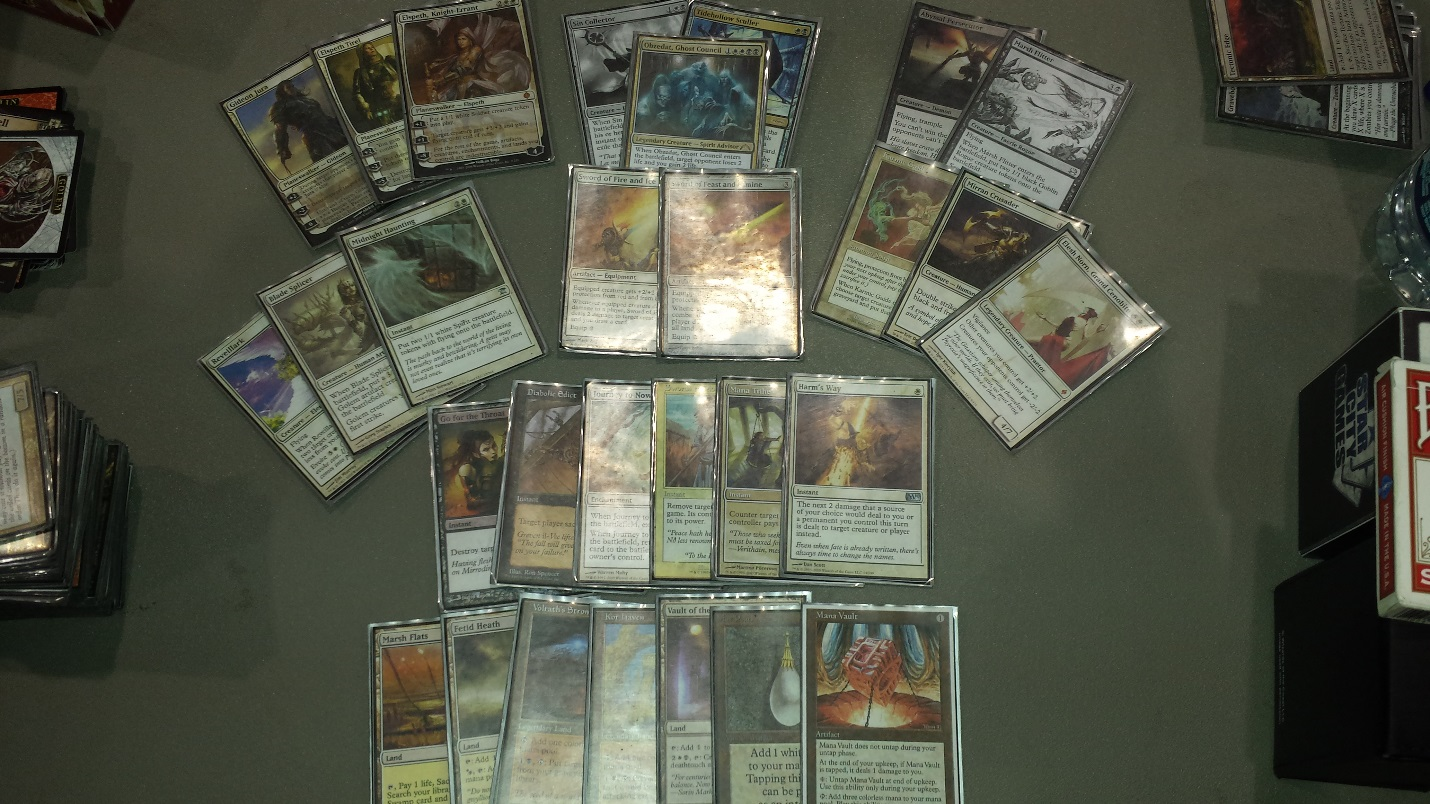If there’s one thing that all Magic players can agree on, it’s that new Magic cards are awesome. I hope everyone had a chance to get out to your local Prerelease—our midnight Prelease at the Star City Game Center here in Roanoke broke our previous record (from Theros) with a whopping 126 players ready to play awful and fun Magic by round 4 at four in the morning. But the record proves that the time-honored combination of flavor plus new plus fun is always going to be a winning one for all types of Magicians.
I was ready to scope out how some of the new potential Cube inclusions look in action, and I got to see my fair share. Born of the Gods is an interesting set for Cube—I think it’ll historically make a mark as a “weak” modernly designed set for Cube but is fantastically designed for Limited. I personally don’t love it due to my dislike of the Voltron setup that heroic calls for, but all of the inner workings of how each color identifies as well as the new cycles and mechanics is a win for a followup to Theros.
The question is this: how do these cards, which are mostly designed for Limited play, transition over to the most powerful Limited format? Let’s find out.
Archetype of Courage
We’ll get started with a great card in Limited. This clearly doesn’t make it in any sort of Cube with rares in it, but my target for the white Archetype is going to be Peasant (common/uncommon) Cubes. I don’t think the three-drop creature slot for Peasant Cubes is filled out very much, and Archetype of Courage is the king of the battlefield when you’re spamming creatures into play. Most games are decided by creature-on-creature affairs, and the Archetype ensures you a leg (or magical spear) up.
Verdict: It’s a sound inclusion in Peasant Cubes larger than 540 cards—any smaller or around that size may not be able to find room.
Brimaz, King of Oreskos
I don’t have much to say about Hero of Cathold that hasn’t been said by everyone else or will be over the next several years. Brimaz is pushed to be the best card in the set that it’s laughably obvious to a point where he actually becomes uninteresting to discuss. If your Cube philosophy allows for mythic rares, find room for the best 1WW creature that has ever existed.
Verdict: Yep. Moving on.
Eidolon of Countless Battles
From a design standpoint, this card is super sweet. This is my favorite bestow creature easily since it’s always correct to cast for its bestow cost first and when that creature finally bites the dust you’re often left with a real threat. Even in midsized Powered Cubes like mine, Eidolon of Countless Battles is a card I’m interested in trying after watching it dominate boards this past weekend. Bestow is always more powerful that it looks, especially when the cost for the actual creature and bestow cost is so similar.
Verdict: I was initially hesitant to recommend this card, but it does have some non-obvious power to it. I’m a fan of Geist-Honored Monk, and although this doesn’t put any other creatures into play, I’m often happy with the size of the Monk itself. Give it a test run in midsize (540) and larger Cubes.
Fated Retribution
We’ve seen similar to this effect before in Rout, a Wrath of God variant I’m not wowed by. The added scry 2 and offing planeswalkers probably isn’t enough to make me give up the flexibility of a two-mana discount for sorcery speed (I view Rout backwards to what the cards really says), and you’re only getting the scry trigger if you tap out for this on your turn.
Verdict: Even in larger Cubes, I’d rather have Rout itself, and for sorcery-speed sweepers, you have a plethora of other options. If the planeswalker crushing makes this enticing for you, maybe you should look at the role of planeswalkers in your Cube instead.
Loyal Pegasus
Here we have another 2/1 for W. There is no way this is able to beat competition from Cubes with rares in them and probably even uncommons, but for a Pauper (commons-only) Cube, out little Pegasus friend is quite the deal. As a turn 1 play, it likely can’t attack until turn 3, but for two points of evasive attacking, I don’t think that’s so bad. It strangely reminds me Glint Hawk Idol in that it needs a trigger to attack, but Pauper Cube is the most combat driven of any Cube so finding a friend for him to ride into the red zone with shouldn’t be a problem.
Verdict: I like the Pegasus for pretty much all Pauper Cubes that value white as a weenie color. That would be all Pauper Cubes. Try it out and I think you’ll be pleasantly surprised.
Spirit of the Labyrinth
Another of the most discussed cards in Born of the Gods, I’m going to say that Spirit of the Labyrinth is just flat-out bad for standard Cubes whether they have power or not. In the vast majority of cases, this is a Blade of the Sixth Pride with the downside of being easily removed by enchantment-destroying effects where your opponents can either ignore the draw-card restriction or simply wait until it dies in combat. If it’s not attacking for fear of dying, then it hasn’t done its job either. Don’t be fooled by its Constructed applications; this card probably isn’t meant for your Cube.
Unless you own a Combo Cube. Then Spirit of the Labyrinth goes from zero to badass as fast as you can say Wheel of Fortune. This is another (and one of the best) hate bear for the land of the combo and is a slam-dunk automatic inclusion.
Verdict: Seriously, this isn’t a card for non-Combo Cubes. I’d much rather have something like Accorder Paladin. In Combo Cubes, let the hate begin.
Vanguard of Brimaz
I’ve mainly included Vanguard of Brimaz here to talk about the heroic mechanic. I think the card above is the best suited card with heroic for Cube, having a very reasonable ability, vigilance, and power/toughness for WW, and it still isn’t good enough. It is going to be a long time—probably never—before we get to a point in Cube where targeting your own creatures with spells is going to be more frequent than targeting your opponent’s creatures to destroy them. If this Vanguard doesn’t come close, I don’t know if we’ll see a Hero in Journey into Nyx that does.
Verdict: Not now and probably not ever.
Archetype of Imagination
Archetype of Imagination is in my opinion the second best of the Archetype cycle for Peasant Cubes. That doesn’t mean that I think it is a worthy inclusion for any Cube however. Other than the red Archetype of Aggression (which is just a 3/2 for 1RR as far as I’m concerned), all the rest of the cycle is too costly for what they offer. Flying is obviously great, but I don’t think the cost of 4UU is worth it for the body that comes along with it.
Verdict: I’d rather have Levitation, and I don’t think that’s a card that can sniff Peasant Cubes. Too much mana for the whole package to make a splash anywhere.
Divination
This is a reprint so it isn’t a card that’s new to anyone’s radar, but I just wanted to include it to encourage anyone with Divination in their Cube to use this beautiful new art.
Verdict: If you have one in your Cube, get this version.
Tromokratis
I don’t remember the last time I was excited for a big stupid creature for seven mana or better no matter how hard it hits or pretends to have hexproof. I hate to use the “it dies to removal” regurgitation, but for a fatty that enters the battlefield without any fanfare, it sure does die to removal when it’s doing either of the two things it’s in your deck to do.
Verdict: Cool name. That’s about it.
Bile Blight
Maelstrom Pulse. Detention Sphere. These are both removal spells that I consider staples in Cube and hit multiple objects more often that you think despite the singular formatting of most Cubes. Bile Blight would likely act the same, hitting a single target 90% of the time and getting super value that last 10%. Despite this, I’m not interested in it for my Cube. I like the effect fine, but my issue lies with the cost.
BB is not the easiest color combination to hit “on time” in most Cubes simply due to black’s role as either a support color in midrange or control or as a part or whole of an aggressive strategy. When it’s in the aggro role, we’re looking at an ARWD (any removal will do) scenario, as you just want something you can reliably cast that removes a blocker. This is where Bile Blight fails since it’s obviously tougher to cast that something with colorless mana in the cost and doesn’t represent the upside that it’ll show in Constructed.
Verdict: This is a no for me, but only due to the casting cost. Cards that fall into this category are great to come back to as time elapses in Magic since there may be a time down the road where this can neatly fit into Cubes. If you feel BB is a casting cost that is hittable early on in your Cube drafts, Bile Blight is a solid but unspectacular removal spell just for its low floor and potentially astronomical upside, especially with the continued advent of good token strategies that modern Magic design implores. If you have a Cube that is deep into token support, this is going to clearly be great whenever you’re able to cast it and should be an easy inclusion.
Fate Unraveler
The effect and size of Fate Unraveler are both nice, but paying 3B for a 3/4 with a largely incidental ability is not going to make any waves in any Cube. Even in a Combo Cube this is too slow to Unravel your opponent’s plans.
Verdict: Nothing to see here.
Herald of Torment
While the Herald looks somewhat innocuous, I’m actually a big fan of what it does. An evasive threat for three mana with a solid upside is right in the sweet spot for black. The most playable bestow cards are ones that curve naturally from their creature cost into their bestow cost, so this compares favorably to Boon Satyr with better text (I’d rather a 3/3 flyer than a 4/2) compared to flash.
Verdict: I’m a fan of this in midsized Cubes and larger. Herald of Torment seems to be another step in the right direction for black aggro, and I’m happy to give it all the help it can get from solid cards like this.
Marshmist Titan
Probably a card you didn’t expect to see on this list. I think the vanilla giant is a much easier to cast Myr Enforcer, and for Pauper Cubes a 4/5 is sizable and tough to remove with the options at common. If Gray Merchant of Asphodel can be a badass, I don’t see why Marshmist Titan can’t bring his stink to the party too.
Verdict: Seems like a great fit for Pauper Cubes of all sizes.
Pain Seer
Raise your hand if you remember the super hyped Blood Scrivener. Funny, me too! Remember all of those “glowing” comments I had about our forgotten friend? I don’t feel this way about Pain Seer. In fact, I quite like this little guy. To explain why, I want to talk about the inspired mechanic.
Each creature with inspired needs to be looked at through one very specific lens before you get to the upside of inspired. What do each card’s base power and toughness stats look like? In Cube, 95% of the time the only way to get a creature tapped is to attack with it. It doesn’t matter how insane the inspired ability on the card is. If it isn’t able to live through combat or at the very least trade with something comparable, you can simply dismiss the card.
A 2/2 for 1B is on par with all other creature that cost two mana, so at the very worst you have a reasonable but unexciting creature on curve. Unlike Blood Scrivener, you’re able to take advantage of it immediately regardless of other factors of the game. Is this bad on turn 10 versus a Polukranos or Sun Titan? Of course, but so is Goblin Guide and Imposing Sovereign; that doesn’t make those cards any less effective in their easy to access optimal mode, and they would never be cut from a deck that wanted the effect.
I’m not going to compare this card to one of the best creatures ever printed in Dark Confidant, and you shouldn’t make the same mistake either. Pain Seer is its own card and should be evaluated contextually based on what it does, not it’s differences from the Great One.
Verdict: I’m in on this guy if you support black aggro. Pain Seer is a very solid creature for most Cubes, as his upside of a Dark Confidant trigger is as high as you can possibly get for a two-drop. He’s also a Human for potential tribal implications.
Spiteful Returned
I’m slightly intrigued by this card since two life from any attack is pretty sizable. Obviously, if it didn’t have bestow as an option, we wouldn’t be talking about it at all, but maybe the potential of a bestow hit or two plus one swing as an actual creature is enough to make it a viable option for lower-powered Cubes.
Verdict: This may be worth a shot in Peasant Cubes, but I’m not willing to go far enough to say if it should get a solid shot or not. I’d love for someone to do some real testing and let me know!
Flame-Wreathed Phoenix
Here we have our first (only?) Cube playable card with the tribute mechanic. Like all punisher style mechanics, we have to look first at the worst-case scenario before we even make it to the best -case scenario. In my opinion, I’m much less excited to have a 5/5 for 2RR than a recurring 3/3 with haste, so I anticipate that to be the most often selected mode. Like the rest of the “haste or big?” tribute cards, unfortunately their haste mode is invalidated by the opponent simply having a blocker, and a 5/5 flyer for 2RR isn’t scaring anyone.
Verdict: Like heroic, we’ve seen the most Cube-playable card with tribute, and it fails to pass the test. I don’t know of any Cube that could play this where it would make a real impact.
Oracle of Bones
In Cube, I think we’re looking at a free Lightning Bolt and then being left with a 3/1 haster. The realistic upside is a free Bribery or Tooth and Nail, but I know the group I play with would be able to identify the worst mode and force that every time. Like the Phoenix before it, the worst-case scenario just isn’t good enough.
Verdict: It probably won’t ever play out the way you want it to.
Satyr Firedancer
My quarterly “man, I hope this card is good” award goes to Satyr Firedancer. The body is wholly unimpressive, and I know that I wouldn’t be interested if this didn’t have legs attached to the enchantment portion. The effect is powerful, and being a creature is better in most cases that not being one. But I feel like he’ll hardly get in any combat damage over the course of the game due to being easily outclassed in combat.
Verdict: Historically the cards that get this award don’t fare well long term, so I expect the Firedancer to follow suite. I’m still giving it a shot in my 540-card Cube, but I have low expectations. Still, the effect is very sweet.
Satyr Nyx-Smith
Out of all of the inspired cards that trigger to allow you to pay to put a token or two into play, the Satyr Shaman has the best combination of ability (haste, obviously excellent with inspired) and reasonable stats to make an impact. Another 3/1 with haste for every turn is actually on par for what you’d be casting every turn in a red deck, so the impact of not casting the spells in your hand (which are going to be similar to the 3/1 haster anyway) is marginalized. I’m not sure if a 2/1 gets outclassed regularly enough on the third turn, but if it is, this is great to drop on an empty board to start accruing advantage.
Verdict: I think this is a pretty easy add in Peasant Cubes and maybe could even make the jump to Cubes with rares. He seems worth a shot to me, especially since the three-mana slot for red creatures isn’t exactly jumping off the page.
Searing Blood
I like Searing Blaze, so I’m going to like Searing Blood. It’s really that simple. The average toughness per creature is lower in Cube that normal Limited formats, so this is going to mimic Searing Blaze without needing the landfall trigger the vast majority of the time.
Verdict: I can’t envision a standard Cube where this great burn spell is left out.
Stormcaller of Keranos
A 2/2 haster for 2R is reasonable as is but nothing to get excited about for Cubes on its own. A repeatable Scry 1 for 1U is powerful stuff, and when you have enough scry triggers, they do start becoming close to drawing a card.
Verdict: I like this card a lot for Peasant Cubes and maybe even larger (720+) Cubes with rares. This card likely plays better than it looks, and I know it has the possibility to break games wide open in regular Limited, so it’d probably worth a test.
Courser of Kruphix
Like Pain Seer, I don’t care that this isn’t Oracle of Mul Daya. This card is fantastic, even if you can’t jump up an extra land every turn. A 2/4 for 1GG is very reasonable, and you draw a card every time a land is on top of your library. This card is a Terror in a non-oppressive way for aggro decks with its incidental life gain and can even attack without much fear of being bested in combat.
Verdict: Like Searing Blood and Brimaz before it, I think Courser of Kruphix is a slam-dunk Cube inclusion in all Cubes regardless of size.
Raised by Wolves
First off, the flavor of this card is spectacular. Secondly, I think this is the most Cubable Aura in Born of the Gods. It compares favorably to Bestial Menace and is a tiny bit better if you have a single creature to enchant. This is probably the baseline for Cube-playable Auras in general, so they really have to provide a nice advantage to even get close to playable.
Verdict: This is a fine card in larger Peasant Cubes, but removal is just too efficient in Cubes with rares.
Ephara, God of the Polis & Karametra, God of Harvests
Like the Theros Gods before them, we must evaluate these Gods in enchantment form only. They of course can become huge monsters, but you have to be awfully devoted. Ephara draws you a card on each of your opponent’s turn on average, and Karametra ramps you a Forest or Plains for your next turn on average. Neither of these are things I would be interested in at their relative mana costs.
Verdict(s): Ephara is cheaper and Karametra has a better shot of becoming a creature, but neither have a great shot of being better than other options that already exist in your Cube.
Fanatic of Xenagos
Xenagos’ Fanatic suffers from the same problems as Flame-Wreathed Phoenix but has an efficient enough body to hold its ground in lower-rarity Cubes. I don’t think he stands up to the competition in Cubes with rares, but he’s probably just fine in Peasant Cubes. Both modes are fine since he gets the +1/+1 bonus and haste even if they don’t pay tribute.
Verdict: I’m trying him in my Cube but don’t expect much.
Kiora, the Crashing Wave
Beautiful art aside, I like Kiora. I don’t love her, but I like her. I’m always going to judge planeswalkers more harshly than any other card type since they’re the only card type that can be oppressive just by existing. The fragile flower Kiora is anything but oppressive and may even be a bit underwhelming on paper. History has shown us that planeswalkers that appear underwhelming often are just fine. She has all of the checks we look for in evaluating planeswalkers for Cube—she protects herself while gaining loyalty, she creates card advantage independent of just being in play, and she has an ultimate that will end the game. Like Ral Zarek before her, things are looking rosy for the Duels of the Planeswalker crossover.
Verdict: I think she fits nicely into Cubes that have room for one more planeswalker. Archetype-wise this is a great fit for how most Cube owners have designed their G/U color pairs. Kiora is the best kind of planeswalker—she’s fun without taking over the game and powerful enough to be played but not piss anybody off.
Kiora’s Follower
I’ll be perfectly honest—although I’m an Orzhovian at heart, I’m a full-on Simic drafter in Cube. I love ramping up to sweet stuff, and Kiora’s Follower helps do that as well as a bunch of other little tricks, including attacking for two. My personal love for this card clouds my judgment of how effective it actually is on a regular basis.
Verdict: I’m going to try this card in my Cube to see if all of the small interactions it has with other cards is worth one whole slot. Strangely, I think this is better in Cubes with rares than Peasant since the support for a G/U deck is much more prevalent, but that also allows spots in Peasant Cubes that would normally be taken up by rares. I hope it lives up to the potential in my head!
Mogis, God of Slaughter
Every time I see a card that looks like Sulfuric Vortex, I have to remind them that only Sulfuric Vortex is Sulfuric Vortex. Like the Vortex, Mogis does like to party, but you only get to bring your life total or your creatures and not both. Unfortunately for Mogis, there is often going to be a clear better option, which makes him the worst of both worlds.
Verdict: Again, the advent of tokens in modern card design makes times hard for the God of Rock, and I don’t think he’s a creature often enough to take advantage of his massive power.
Phenax, God of Deception
If you’ve read any of my past articles before now, you’re probably familiar how I feel about cards like Moat and Jace, Memory Adept. Phenax is the creature version of those cards—completely miserable to play against and not particularly fun to play with. I’ll admit that drafting with him in mind is a more rewarding experience than the other two cards I mentioned, but Phenax is also infinitely more difficult to remove from play than the other two. It doesn’t take much to finish your opponent off once Phenax comes to town.
Verdict: Phenax is a great card for Cube owners that hate their friends, but keep in mind you likely will only get to play with him once per friend. Just a miserable card to play against.
Xenagos, God of Revels
Xenagos in big papa form is the best of the demigods so far, acting like a Fires of Yavimaya on steroids. The only problem is that Fires of Yavimaya hasn’t been Cube worthy in years, so what makes the God of Revels any different? Honestly, probably nothing, but it is worth noting that he’s the only non-complete-jerk God (*cough* Phenax *cough*) that has an immediate effect on the board when he joins the party. If you curve your four-drop creature into Xenagos, he’s going be causing an awfully hard hit. He also makes every creature you play after him into an automatic party-fueled terror, which is trouble for just about every deck.
Verdict: I’d be lying if I didn’t say I wasn’t concerned we’re still talking about a five-drop, but he’s still a powerful board presence in enchantment-only form. I like him the best of the demigods, but I don’t know it he’s going to make an impact often enough to be granted an extended stay in my Cube.
Astral Cornucopia
Verdict: I’d rather have Coalition Relic, Chromatic Lantern, and Darksteel Ingot before I’d look at the Cornucopia. You’d have to have a massive and bigger than 720-card Cube to even begin to consider it.
Temple of Enlightenment, Temple of Malice, Temple of Plenty
Standard has demonstrated the power of these Temples, and their potential inclusion in your Cube comes down to two things. The first is speed—do you want (maybe more?) lands that enter the battlefield tapped in your Cube? I do think these are the best of that variety than can’t animate and attack your opponent. The second is space—do you have room for another cycle of ten lands in your Cube? We’re going to get a new cycle of lands every two years for the foreseeable every other year and have been for some time, so space is likely already an issue for most Cube owners.
Verdict: The answer to both questions for my Cube is no, but I don’t deny the power of the lands. I value speed in my lands over just about anything, so lands have to beat out the Worldwake man lands to find a spot if they come into play tapped. These are about as close as any lands have come but ultimately come up just short for me.
To be honest, I’m surprised I had so many cards to talk about with a set that looks filled with, well, filler for Cube. I think this set has a lot of great exercises for how to evaluate cards, which is always an important skill to add to our increasing repertoire as Cube designers. Be sure to let me know of any cards I may have missed or any experiences you’ve had with Born of the Gods cards in your Cube!
Justin Parnell
Draft my Powered Cube on CubeTutor.com!
Draft my Tokens Cube on CubeTutor.com!
@JParnell1 on Twitter
Official Facebook Cube Drafting Page
My and Ali Aintrazi’s Custom Cube Project Facebook Page

